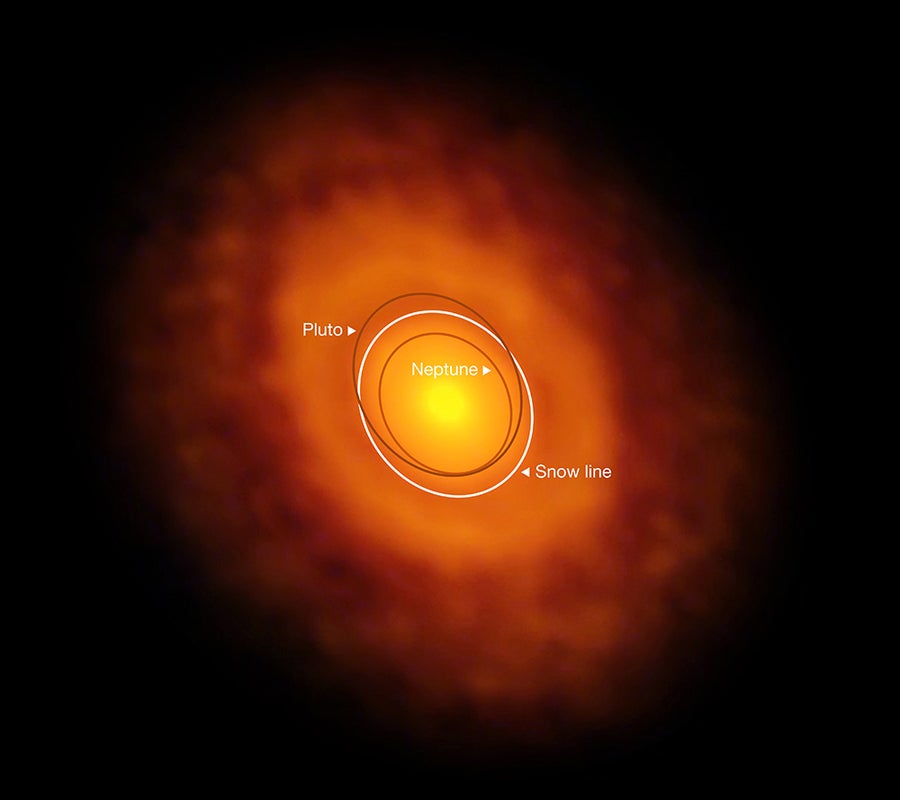This article was published in Scientific American’s former blog network and reflects the views of the author, not necessarily those of Scientific American
Despite remarkable accomplishments (and any claims to the contrary), we are in many, many respects still profoundly ignorant about the nature of the universe and its contents. That might seem depressing, but I think it's wonderfully exciting - there are so many things for the human intellect to study and attempt to understand, so much fun to be had and so much awe to explore!
For a little northern-hemisphere summer stimulation I've picked a triplet of puzzles spread across this and the next two posts. These certainly aren't the only big conundrums for science - but they're good fodder for sun-dazed pondering.
#1 Planetary systems:
On supporting science journalism
If you're enjoying this article, consider supporting our award-winning journalism by subscribing. By purchasing a subscription you are helping to ensure the future of impactful stories about the discoveries and ideas shaping our world today.
Yes, plain old planets.
There is a delicious irony to the current state of exoplanetary science. On the one hand, in the past 20 years we've witnessed an undeniable revolution in the discovery of worlds around other suns. Planets are not only common as cosmic muck, they are also highly varied in size, probable composition, and orbital configuration.
Yet within all that variation - confirming the highly stochastic nature of planet formation, from the non-linearity of orbital dynamics to planet's unpredictable collisional histories - the majority of planetary systems simply do not look like ours. Even accounting for the biases of our detection methods, systems with gas giants configured like Jupiter and Saturn together with inner worlds of the size and spacing of ours, are not common.
Most stars in our galaxy appear to harbor planets. But most also harbor plenty of small and moderately large planets on orbits that would all fit neatly inside the orbit of Mercury - with periods of less than 100 Earth days. In fact about 50% of Sun-like stars harbor worlds between the mass of Earth and 50 times the Earth's mass on orbits no longer than a few months.
Furthermore, cosmochemical evidence (from meteorites and planets) in our solar system suggests that primitive solid bodies formed very early - close to 4.6 billion years ago. By contrast the terrestrial worlds weren't finished until some 100 to 200 million years later. That wouldn't be too puzzling, except for the fact that current data on super Earth exoplanets suggests that many harbor big atmospheres of gas (mostly hydrogen and helium). Those atmospheres must have been captured by well-formed rocky worlds very early in their system's formation - before the gas dissipated, as it must have in our solar system by 100 million years into its history.
In other words, it seems that our terrestrial-analog exoplanetary cousins probably formed rather earlier in their system's timeline than Earth, Mars, Venus, or Mercury. Something must have taken place in our baby solar system to prevent or eliminate a clutch of close orbiting, but substantial, planets.
Among the ideas posited to help explain this picture is the so-called Jupiter Grand Tack. In this scenario a young Jupiter migrated inwards to about 1.5 astronomical units from the Sun, and then outwards ('tacking') after catching an orbital mean-motion resonance with Saturn. Jupiter's inwards swoop could have disrupted an earlier batch of close-orbiting planets, leaving things to sort themselves out in collisions and mergers that would take at least another 100 million years to complete.
The bottom line is that the solar system does not seem to be typical, and may even be quite unusual. Not only does that challenge our current models of planetary formation (which have relied heavily on local evidence from our planets, moons, asteroids and other primitive bodies), but it also raises the tricky question of whether the existence of life here is directly related to the peculiarity of our entire solar system.
What's the answer? We don't know yet, but maybe the solution resides in watching similar scenarios play out in other young planetary systems - captured by observatories like ALMA.

ALMA image of proto-planetary disk in V883 Orionis system, showing a transitory water-ice 'snow line' due to a stellar outburst. Credit: ALMA (ESO/NAOJ/NRAO), L. Cieza
